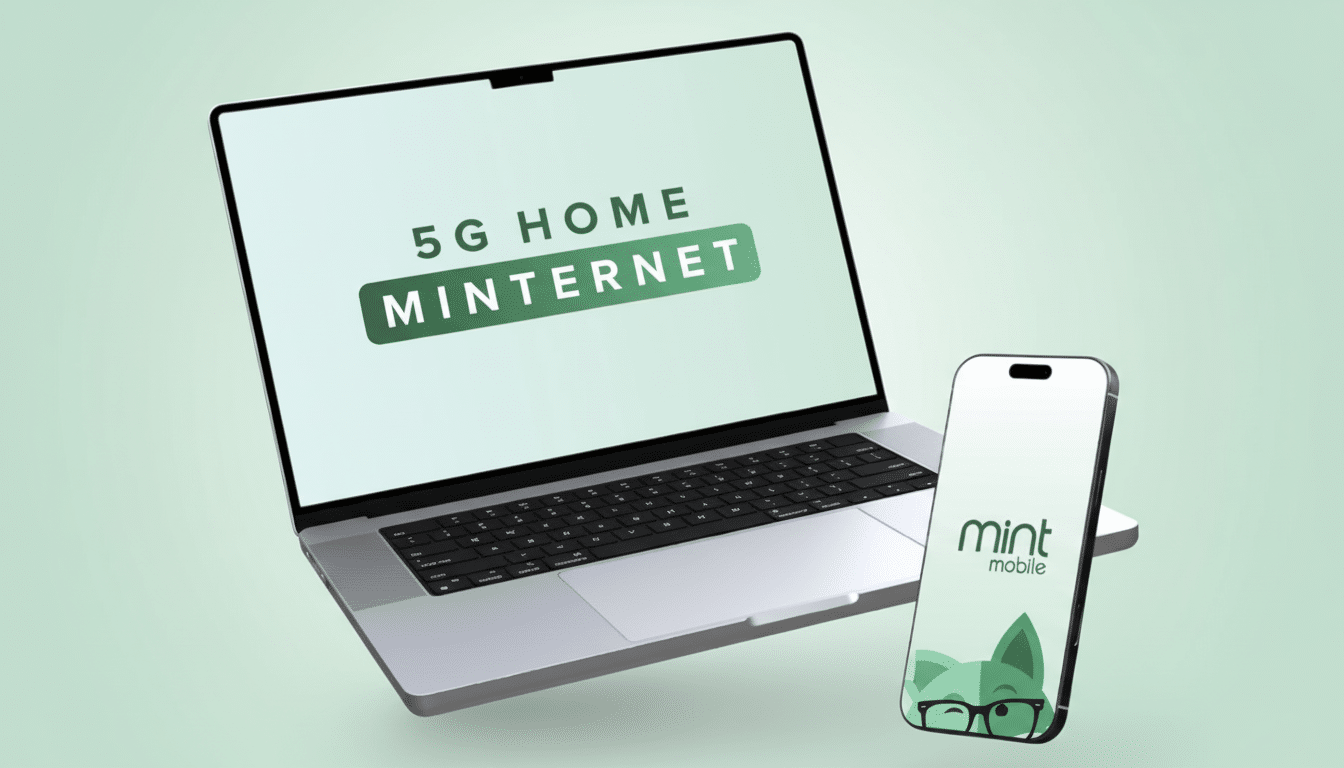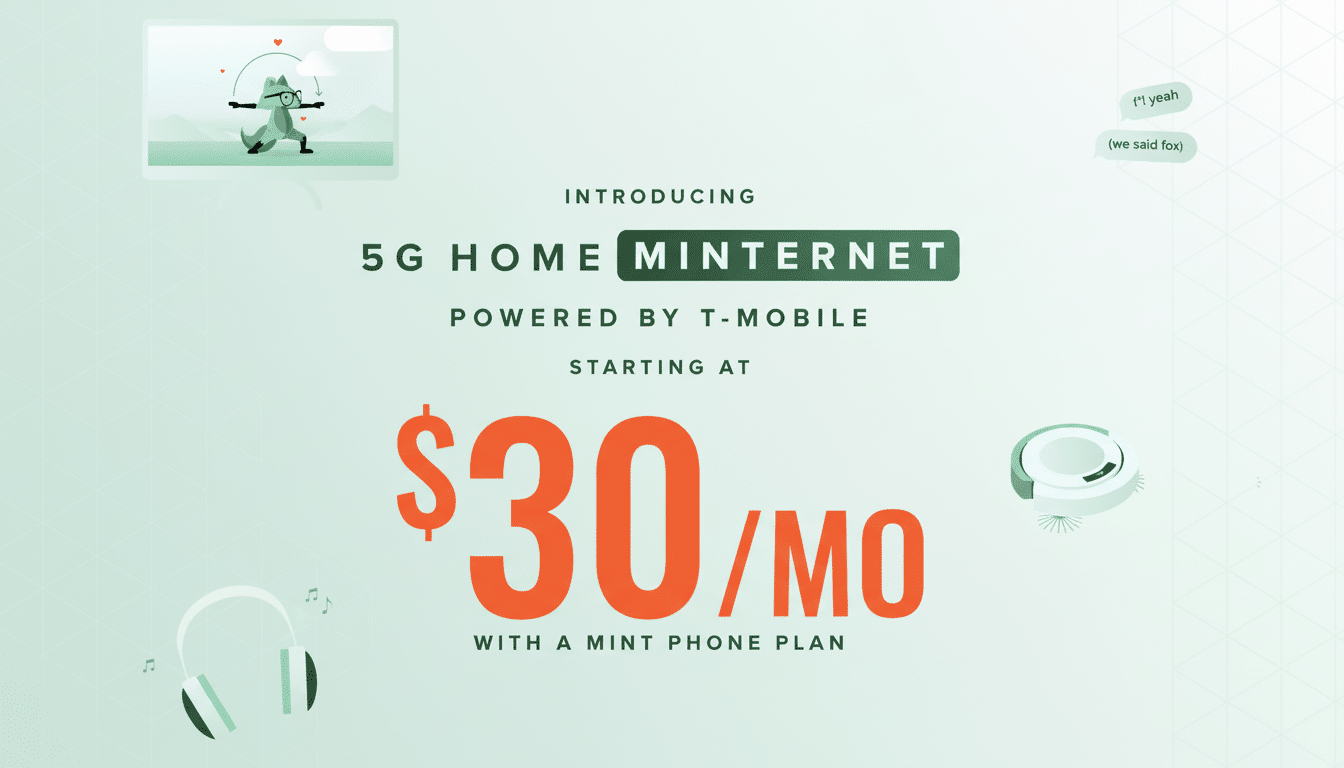T-Mobile and Verizon are taking their fixed wireless home broadband into the prepaid aisle, gambling that simpler pricing and big-box distribution will draw in more households away from cable.
Tracfone — which is owned by Verizon and itself owns more than 21 million prepaid wireless accounts — now sells 5G Home Internet at Target, starting at $60 per month with a $69.99 gateway, while Mint Mobile, which operates on T-Mobile’s network through an intellectual property licensing agreement, has introduced “Home Minternet,” beginning at $40 per month with the router included.
- What the new prepaid home internet plans include
- How they compare to their core parent brands
- Prepaid Fixed Wireless Is Not a Novel Concept
- Why carriers are selling prepaid fixed wireless access
- Coverage, speeds and the fine print you should watch
- Who these prepaid home internet plans are best for
- Bottom line on prepaid 5G home internet options

What the new prepaid home internet plans include
Tracfone’s offering advertises average downloads of 20 to 200Mbps on 5G (3 to 15Mbps up); if you fall down to LTE, then you should expect around 20 to 50Mbps. The plan is not tied to any mobile line and has no cap on data. On Tracfone’s site, underneath the description of each plan, there’s a blurb about network speed with a link to check service in your area — and the FCC broadband label appears on the site, except that it comes with “price and rebate information,” like this one for $70 that offers slightly different speed ranges.
Mint’s Home Minternet rides T-Mobile’s faster mid-band 5G footprint. Mint advertises typical downloads of 133 to 415Mbps and typical uploads of 12 to 55Mbps, also without a cap on data. Like Mint’s phone plans, it’s pay-to-play pricing: you’ll pay an entry rate of $40 per month on a quarterly schedule, after the first three months or so (or as low as $40 if you prepay for the year in advance). The router comes at no additional cost.
How they compare to their core parent brands
Verizon’s own 5G Home Internet plan, meanwhile, begins at $50 a month with autopay or $35 when paired with any Verizon mobile plan; that makes Tracfone’s $60 prepaid option the (relatively) premium route — especially for supposed budget-minded customers. The pitch, as described by industry analysts present at the presentation, is reach and ease: your mass-market-product-on-Target-shelves that you can bring home and do yourself in minutes without techs or a mobile-line mandate.
On the T-Mobile side of things, Mint’s pricing also undercuts T-Mobile’s mainstream 5G Home Internet, which is $50 if you want it standalone or $30 if you already have a phone plan with T-Mobile. What Mint does have is a twist: commitment length — you’ll need to prepay for the entire year to get the lowest effective rate, which readers tell me is old hat in prepaid circles, where people are used to trading flexibility for cost.
Prepaid Fixed Wireless Is Not a Novel Concept
Both carriers have experimented with prepaid channels for home internet in the past. Metro by T-Mobile has offered a 5G home plan for $40 per month — $10 below T-Mobile’s base price — but it required an active Metro voice line and purchase of a $99 router. Among Verizon’s offerings through Tracfone is the Straight Talk brand, which has sold home internet for $45 a month or $35 with certain Straight Talk unlimited phone plans, launched with a $69.99 router on Verizon’s network.
AT&T, which sells Internet Air as its fixed wireless product, has yet to expand a similar home broadband offer via AT&T Prepaid or Cricket.

Why carriers are selling prepaid fixed wireless access
Fixed Wireless Access (FWA) is the growth engine of U.S. broadband. Research companies like Leichtman Research Group report FWA comprised the bulk of net broadband additions in the past year, even as many cable operators saw subscriber declines. Self-install gateways, no appointments and straightforward monthly pricing reduce the friction for households that are fed up with promotional bundles and equipment fees.
Prepaid distribution widens the funnel. Retail shelf space in chains like Target snags customers who may not want to undergo a traditional credit check or commit to a postpaid bundle. It also offers carriers a way to partition pricing without the undercutting problem they have when it comes to core postpaid offerings, and is a means of shifting mentally from thinking about over-the-air connectivity as something expensive tied to spectrum licenses instead, perhaps, of cheap excess 5G network capacity already constructed in neighborhoods with strong signal and no fiber.
Coverage, speeds and the fine print you should watch
FWA performance is going to vary with local signal quality, network load and how much mid-band spectrum a carrier can drop at your address. Independent testing by organizations like Ookla and Opensignal has consistently put T-Mobile in the lead for U.S. 5G availability and median speed, with Verizon running a close second on capacity-rich sites — relevant context as you contemplate both the Mint and Tracfone paths.
Before making the switch, carefully check eligibility based on address and verify return windows for hardware. Speed estimates on FCC broadband labels like these are for “typical” speed, not a guarantee of what you can expect, and prioritization rules like those T-Mobile is applying could slow speeds if the network gets congested. Also consider the equipment policies: Mint comes with the gateway; Tracfone requires an additional purchase.
Who these prepaid home internet plans are best for
Renters, students and cord-cutters who like the simple experience and predictable billing are probably going to come out ahead here. But people in homes where 5G mid-band offers significant coverage could start to get cable-like speeds without paying those high prices — so long as they don’t sign up for expensive TV packages in the first place. Serious power users who require sustained multi-hundred‑megabit uploads or superlow-latency performance for specialized work may still want fiber, if it’s available.
Bottom line on prepaid 5G home internet options
Mint Mobile and Tracfone bring T-Mobile and Verizon’s 5G Home Internet to prepaid, retail-friendly packages. Mint continues to beat its price-leading drum at $40 for longer commitments, including a router; Tracfone touts easy access at retail and in-store payment options, albeit with a higher monthly fee than Verizon’s central plan set. For a lot of households, the decision will simply depend on address-level performance — and whether the ease of prepaid and grab‑and‑go setup beats a cheaper postpaid bundle from the same network.

